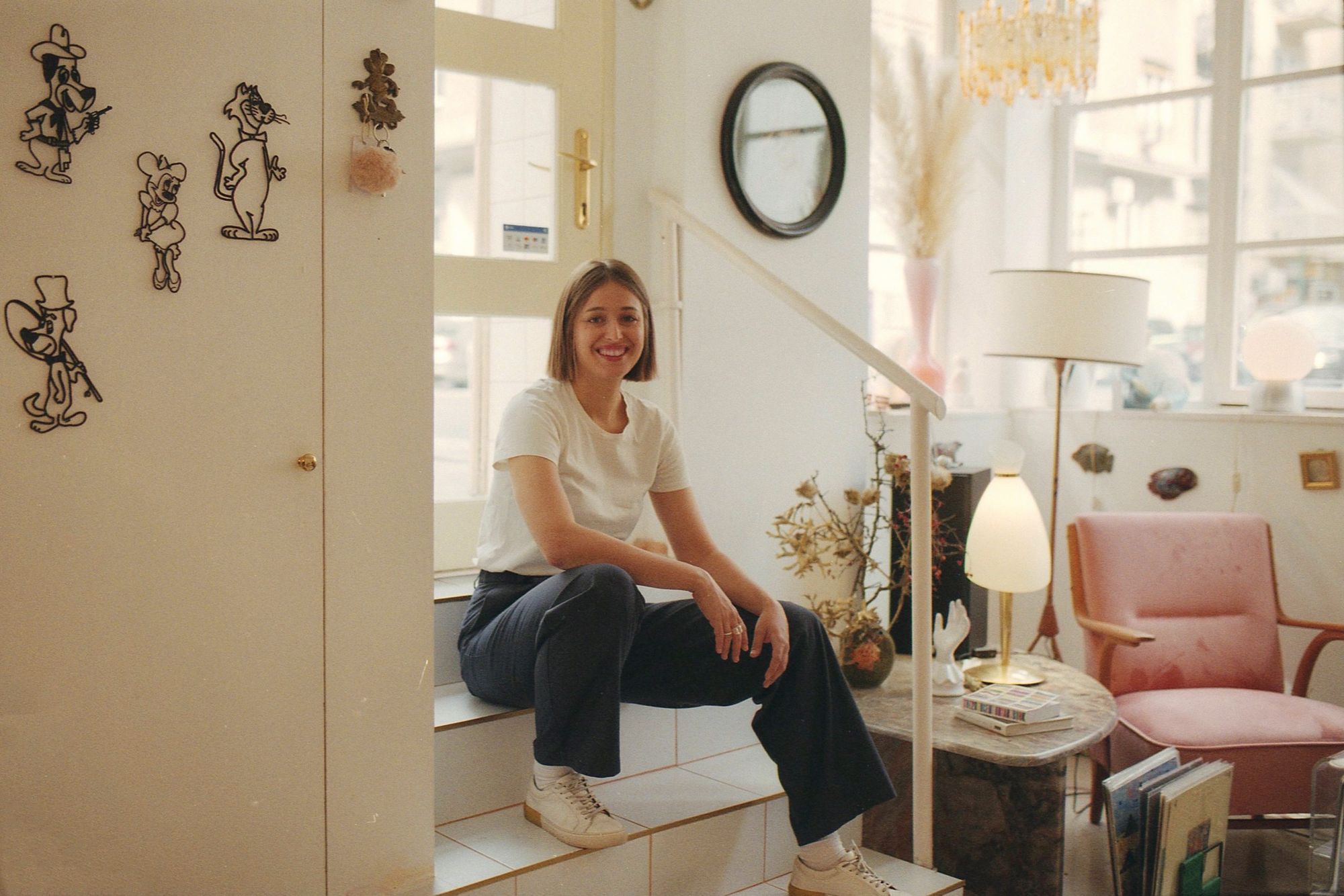From the outside, the Patina showroom on Katona József Street is a treasure trove of unusual gems. Behind the huge windows, you can see magical-looking furniture and lamps: from crystal balls and clown-shaped lamps to floor-to-ceiling mermaid lamps made of shells. It later turns out to be the owner’s current favorite, and she secretly hopes to take it home. We visited interior stylist Zsuzsi Gulyás in her little vintage kingdom, which is a showroom, a warehouse and her workstation, all in one.
Zsuzsi arrives at the shop in Újlipótváros on her bike, having just run off somewhere. Fresh and cheerful, just like Patina itself. There’s no trace of the old-fashioned atmosphere in the shop, which is common in a place full of antiques. But here, somehow, the carefully selected objects are full of life and light.
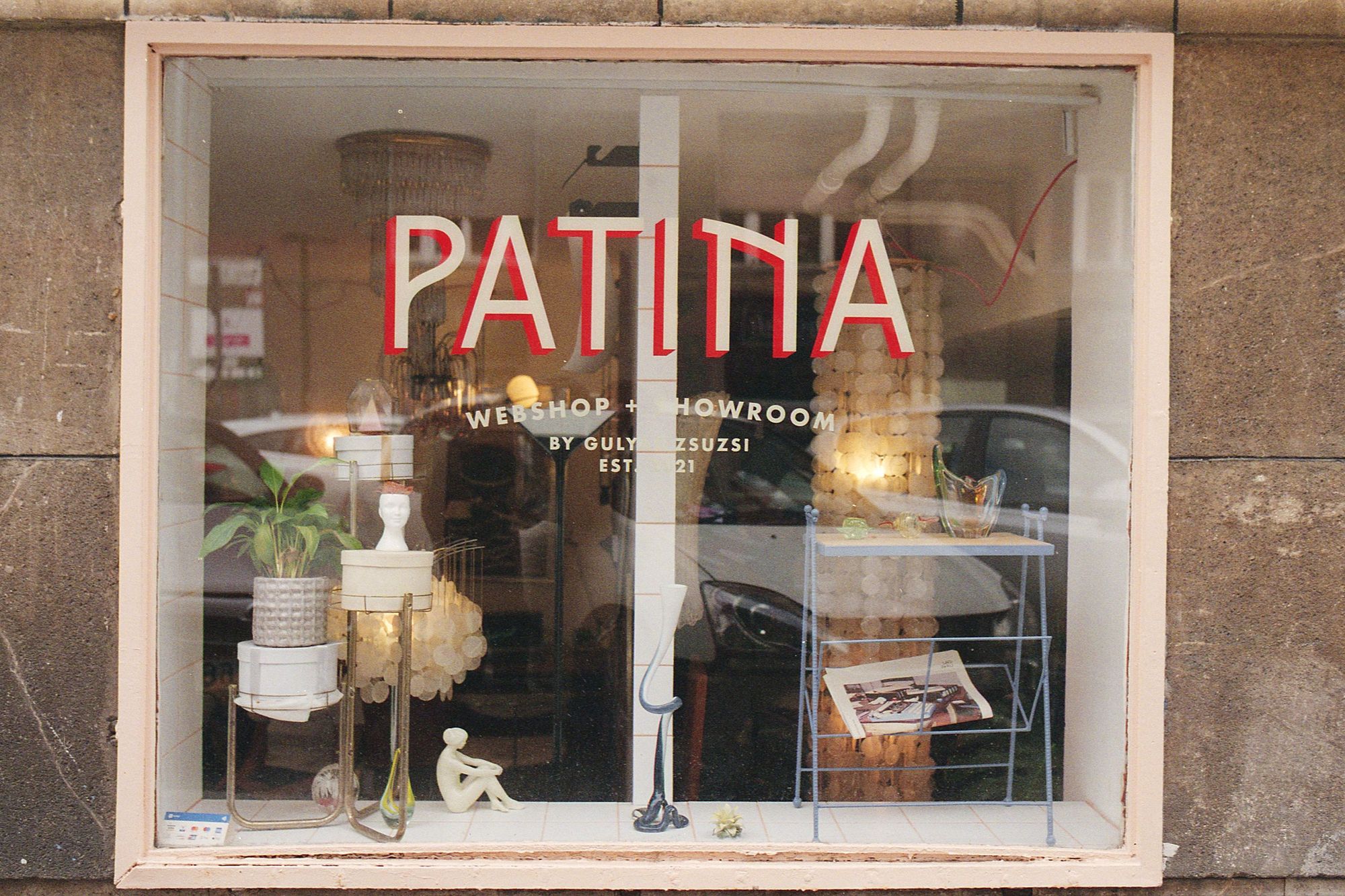
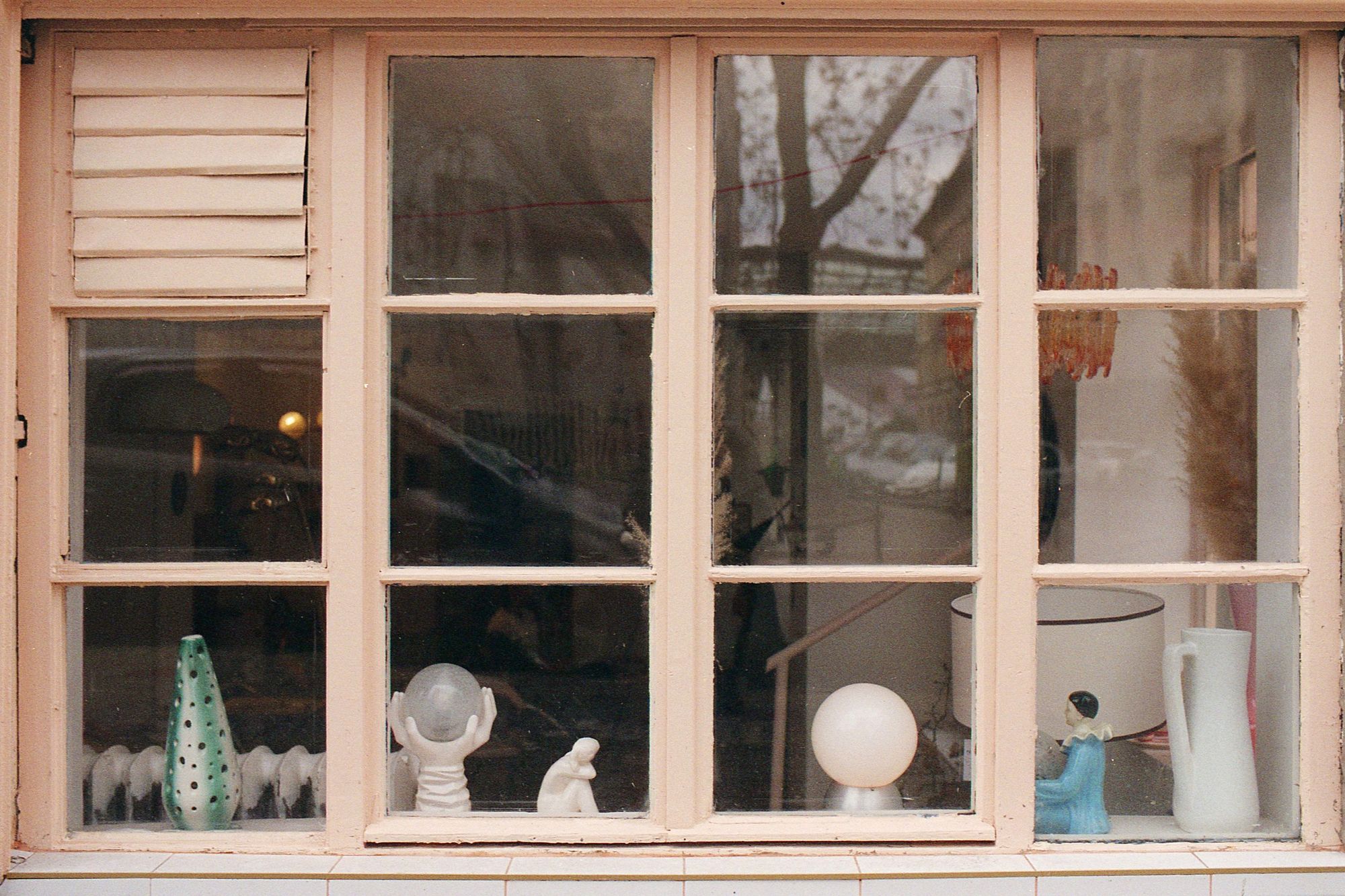
Zsuzsi started her career in interior styling from a relatively distant background: she worked in the field of finance, then in advertising for ten years, later on, worked for a furniture company in Japan for two years, and after moving back home she was a manager in a furniture company. In the meantime, she also did some film set decorating and food styling, and practiced and self-taught interior design in her friends’ homes. Then, slowly, the direction began to clear: collecting old things and decorating personal spaces. The final breakthrough in interior design came with the Covid closures. “I had a choice between going back to work as an employee or going out on my own. I opted for the second and gave myself six months to do my website and come up with the concept for Patina. I already had most of my collection of objects to go with it, and since we were already being pushed out of our apartment and storage, I set up my shop with them. I thought it would be a bit slower to get going and I’d have to be patient, but the positive feedback came straight away. I grew up in the area and when we were painting and cleaning, someone would come in every ten minutes. Old and new acquaintances, from the oldest to the youngest, all stopped by and asked how things were going and wished me luck. We opened in October, and since then I’ve had a lot of people from the neighborhood stop by. In the meantime, I’m having more and more clients whose homes I’m decorating, and I’ve gotten more requests from restaurants, which I’m enjoying tremendously.”

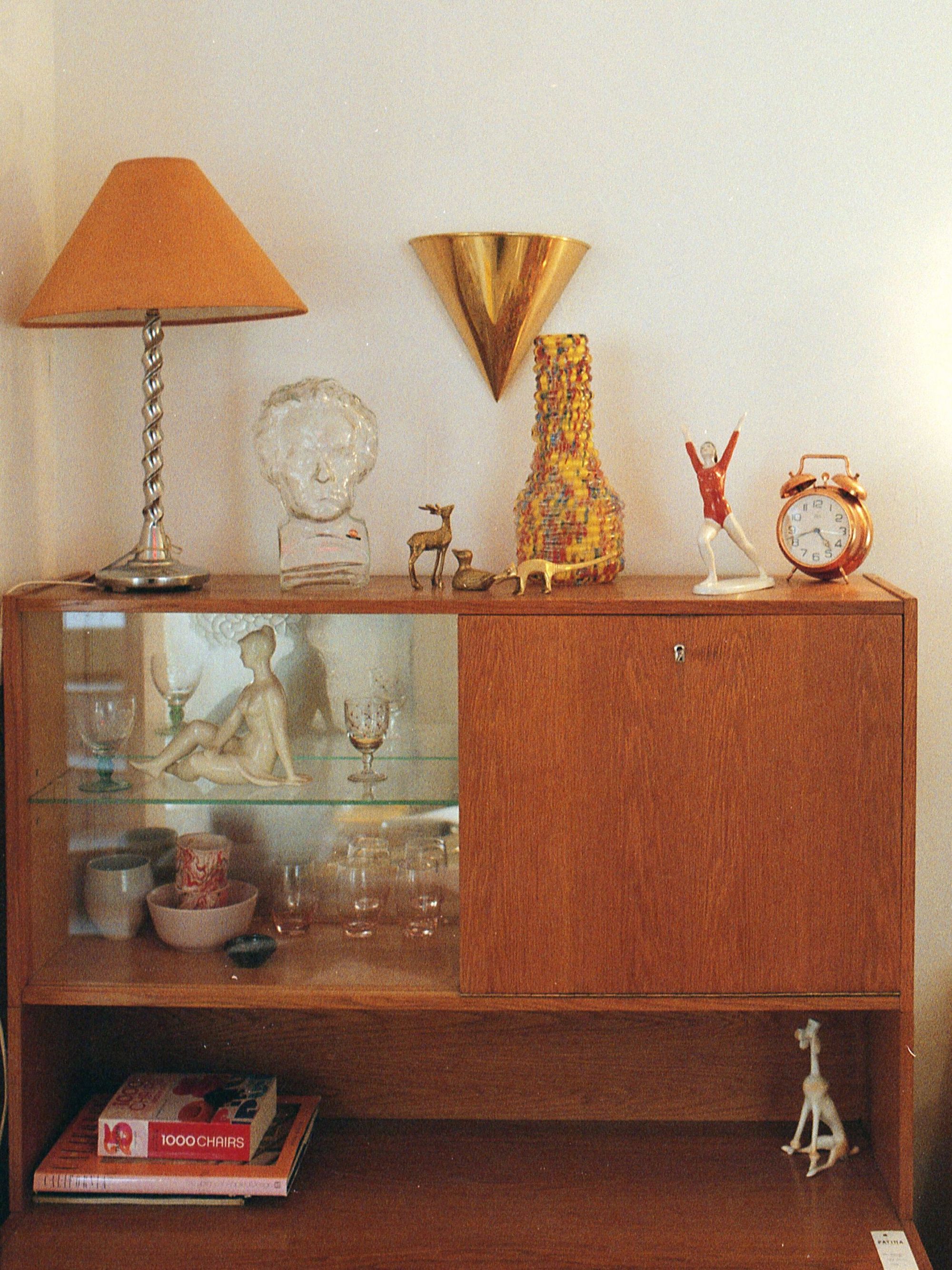
Zsuzsi’s love of old things started with music when she first heard the Beatles as a teenager. “I got hooked on something about the sixties. I felt there was something about that era that I really resonated with,” she told us. The old music was followed by a love of vintage objects that is no longer limited to the sixties. “It’s more about shapes for me than eras. I really like airiness, Italian lamps, and anything that’s a little bit interesting and lit. Lately, I’m really into the vibrant colors and bolder lines of the eighties, but I also like to combine different styles.”
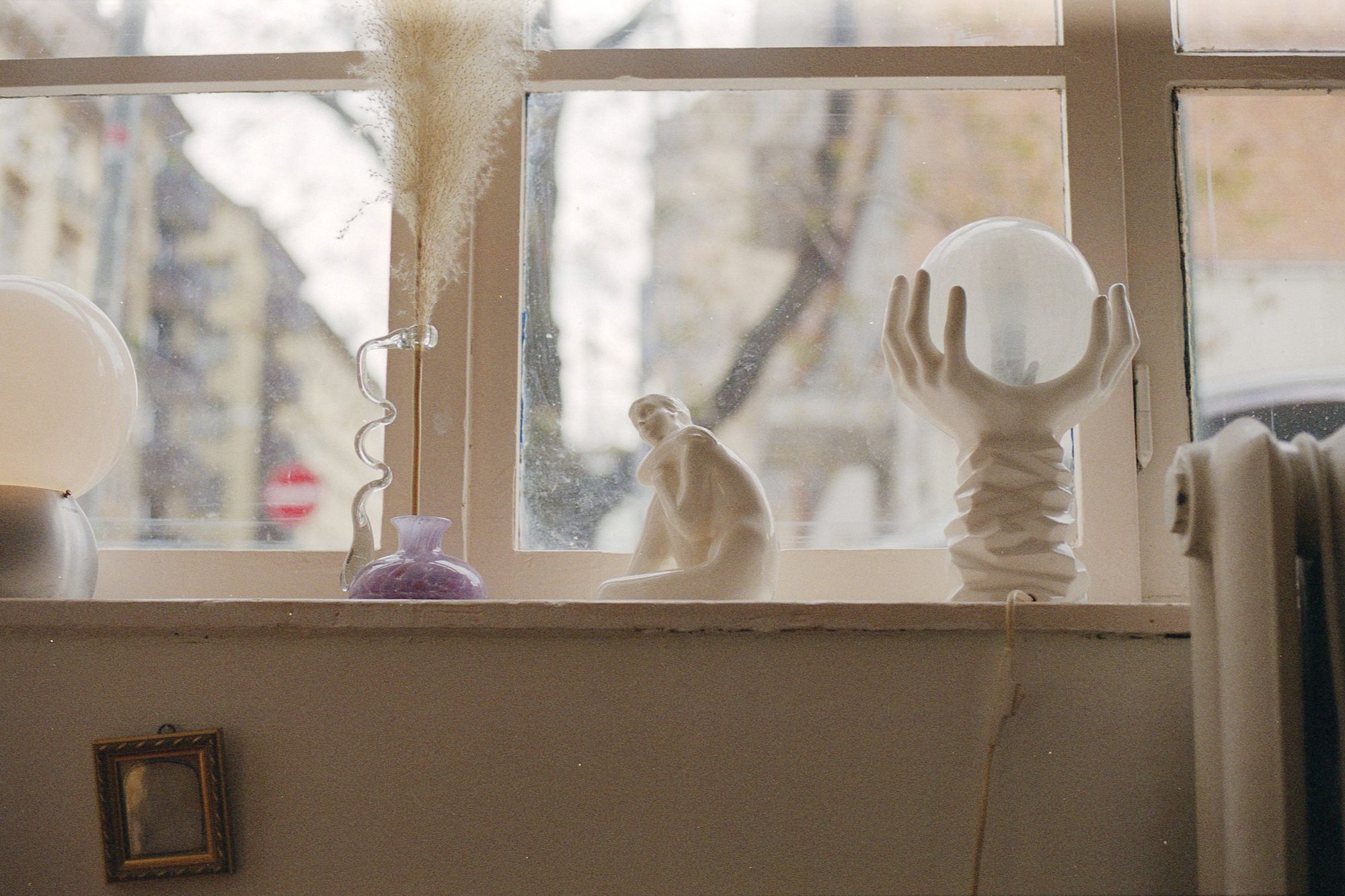
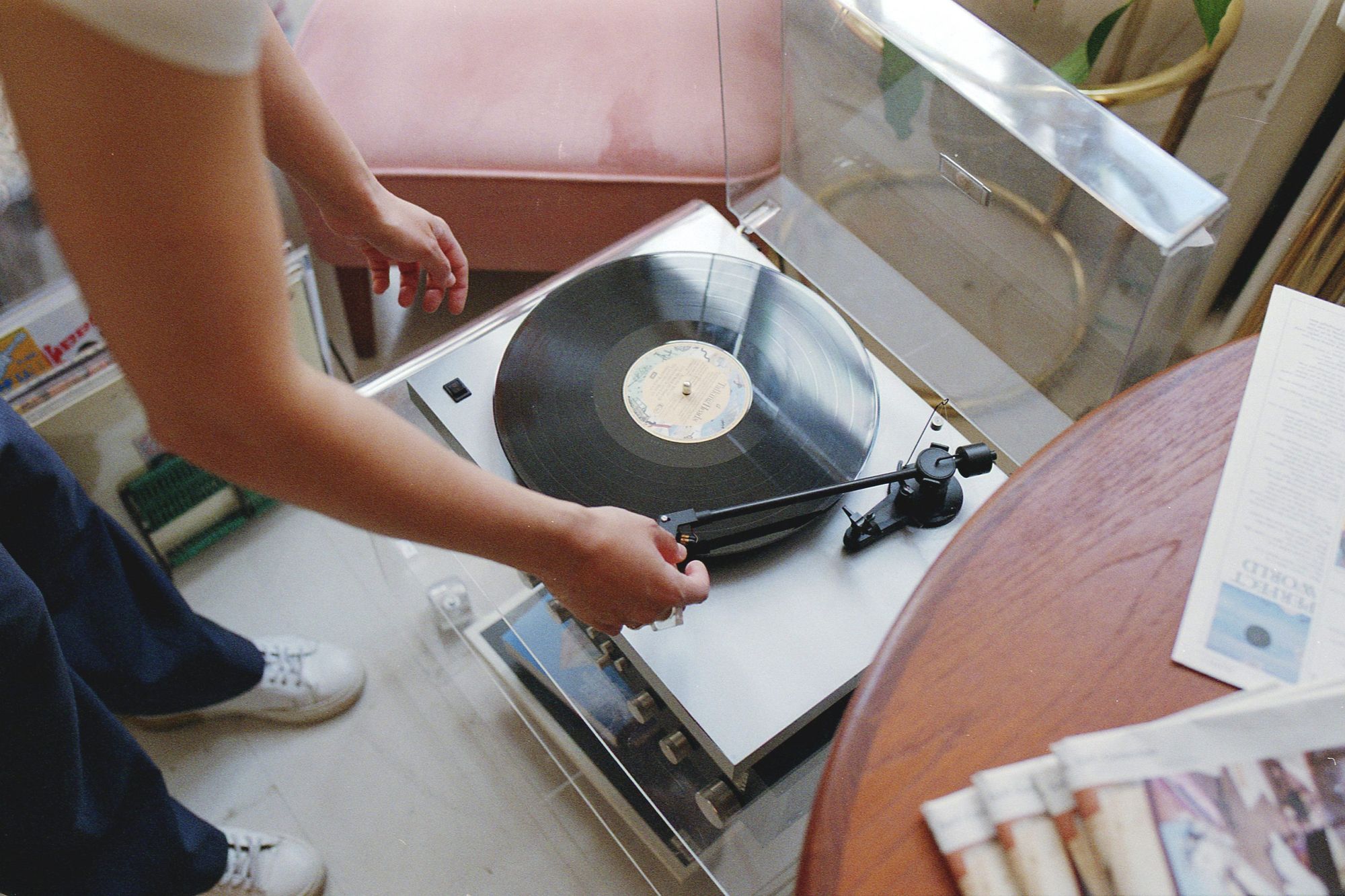
There’s a constant rotation of items in the shop, and the fresh atmosphere is enhanced by the fact that you can always discover something new in the window. Zsuzsi is constantly on the hunt for new treasures and then takes them from there to her customers’ homes or her own, but the process often works the other way round. “For me, it’s always the atmosphere people imagine for their homes that interests me the most. They usually have a hard time conveying that, but I have questions that help, such as asking them to send me three songs they’d like to listen to in their new space. I then try to associate objects and visuals with them. If I’m working on, say, three interiors at the same time, I filter those three apartments in my mind when I go on buying rounds. I close my eyes and I can place objects in space, visual memory and spatial vision are strong skills for me, fortunately. Sometimes I find a very special object in the process, and then we sort of sew the coat to the button. I also often take the objects up to the apartments to try them out, and if I don’t like them after a week or two, I bring another one instead. It’s a pretty free process. Meanwhile, I see myself more as a worker, I like to do everything myself: carrying things, wiring lamps, drilling, nailing, sanding. And the whole point is to get the result the way the client wants it, only much better,” says Zsuzsi, putting a Talking Heads record on the vinyl and filling the room with a light, eighties vibe.

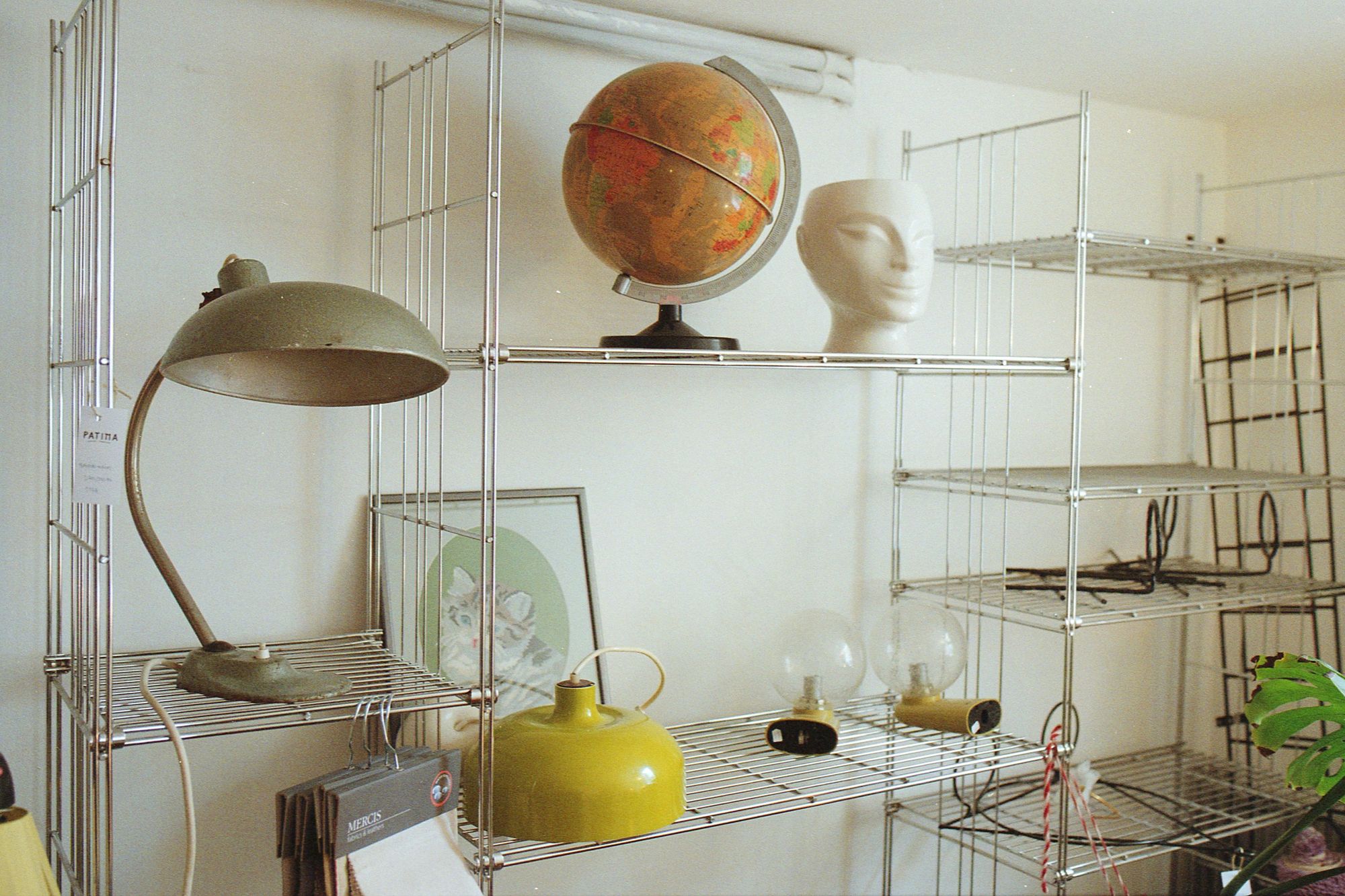
Zsuzsi only buys new furniture when it’s specifically justified, for example, when her restaurant clients need more of certain accessories. “I also think of restaurants as personal spaces for the owner and the guests. That’s why I approach them as I do the design of a private home. For quantity reasons, of course, I use more modern objects here, but I always reach back to the past for accessories and decorative elements. I love working on restaurants designed by URBA interior design studio. What they do is the best base for me. There’s nothing to improve, nothing to compensate for, it just needs to be a little bit cozier. Examples of such collaborations include The Acai Spot, and Felicita, an Italian restaurant in the Hegyvidék Shopping Center. My main concern here was to make sure that people didn’t feel they were in a mall. The idea was to create an oasis of plants in front of the glass wall facing the street so that wherever you look you see green. The brief, by the way, was Italy in the fifties, which was very close to my heart,” she says.
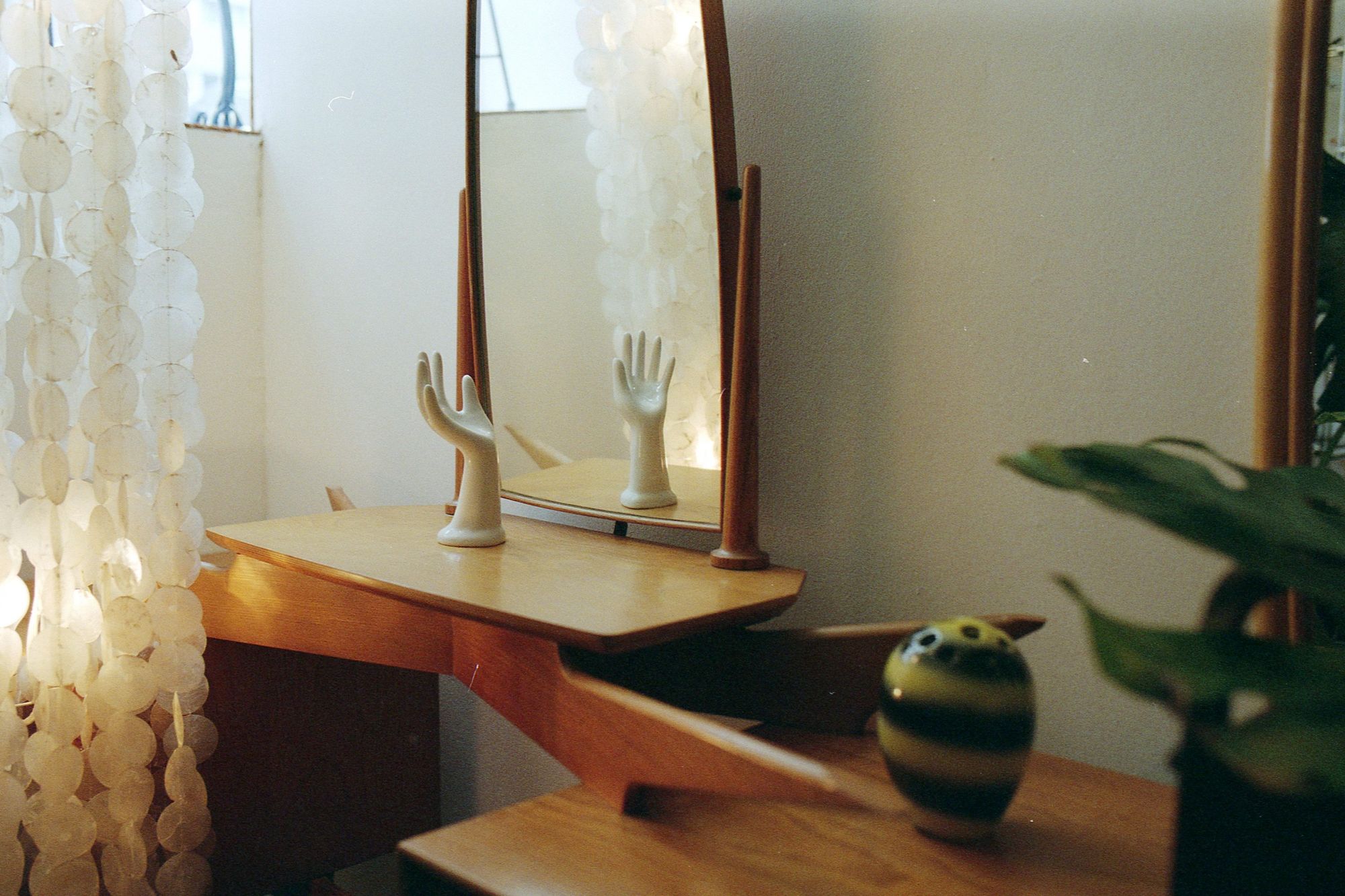
“I used to feel that I was always giving with my work and then I would recharge in my personal life. Now I’ve got to the point where I’m recharging in my work and I can take that surplus with me,” shared Zsuzsi, who is currently thinking about a capsule furniture collection that we might soon see alongside vintage treasures at Patina.

Photos: Dani Gaál
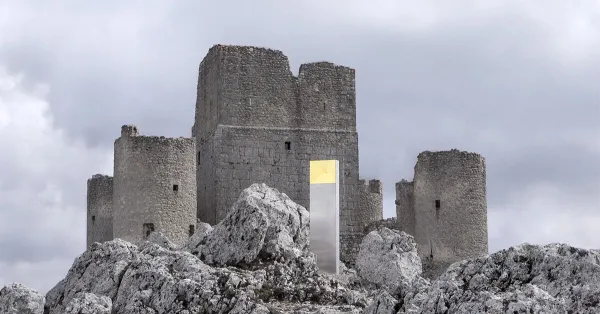
Kinetic totem distorts the space on a hilltop in Italy
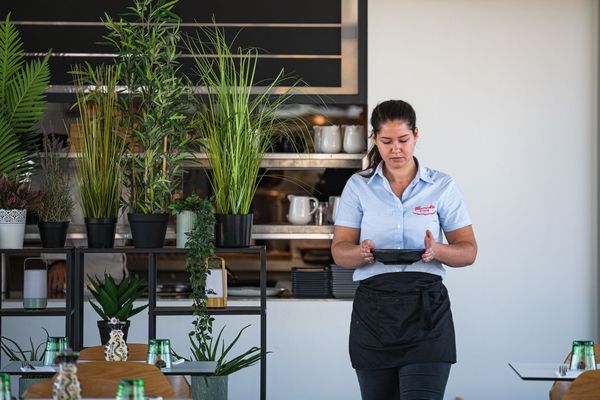
Gastro status report, behind the counter and beyond: opinions from the hospitality industry










